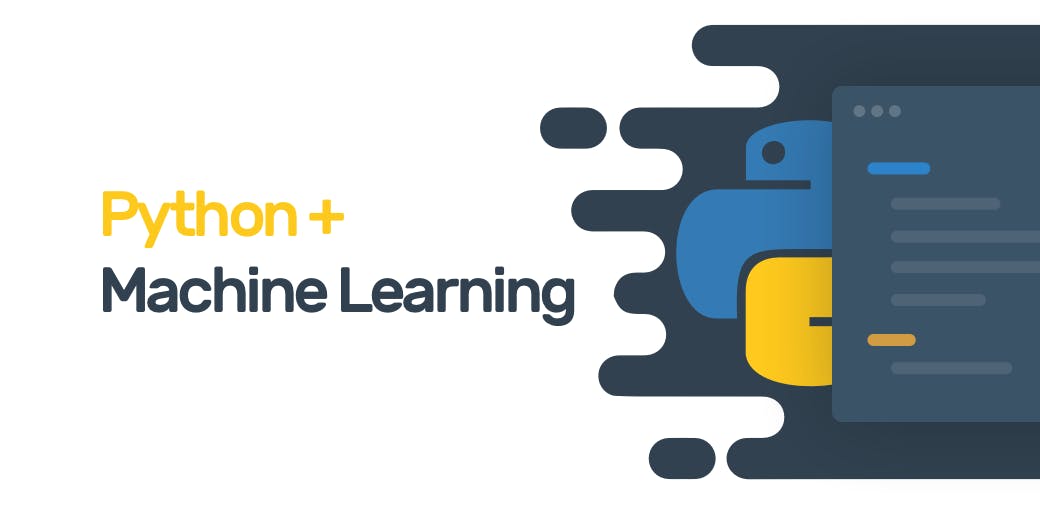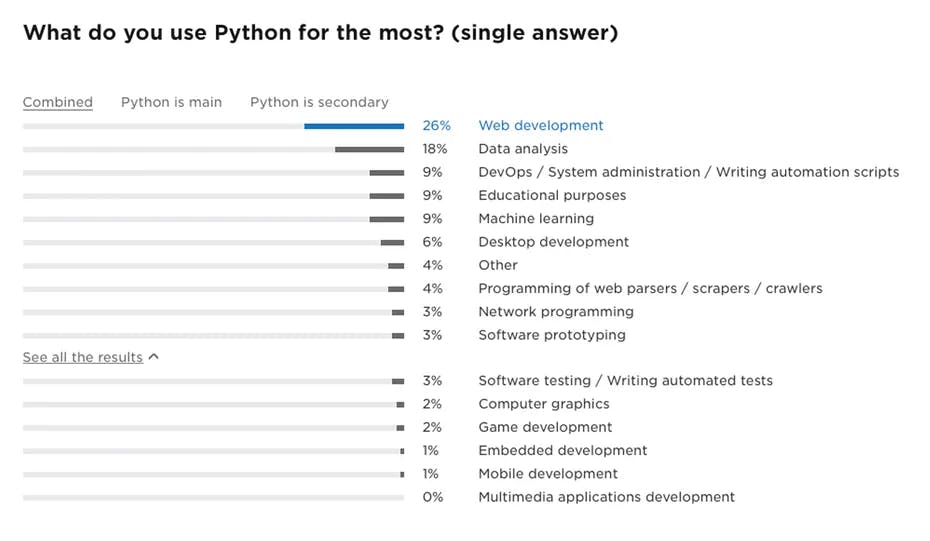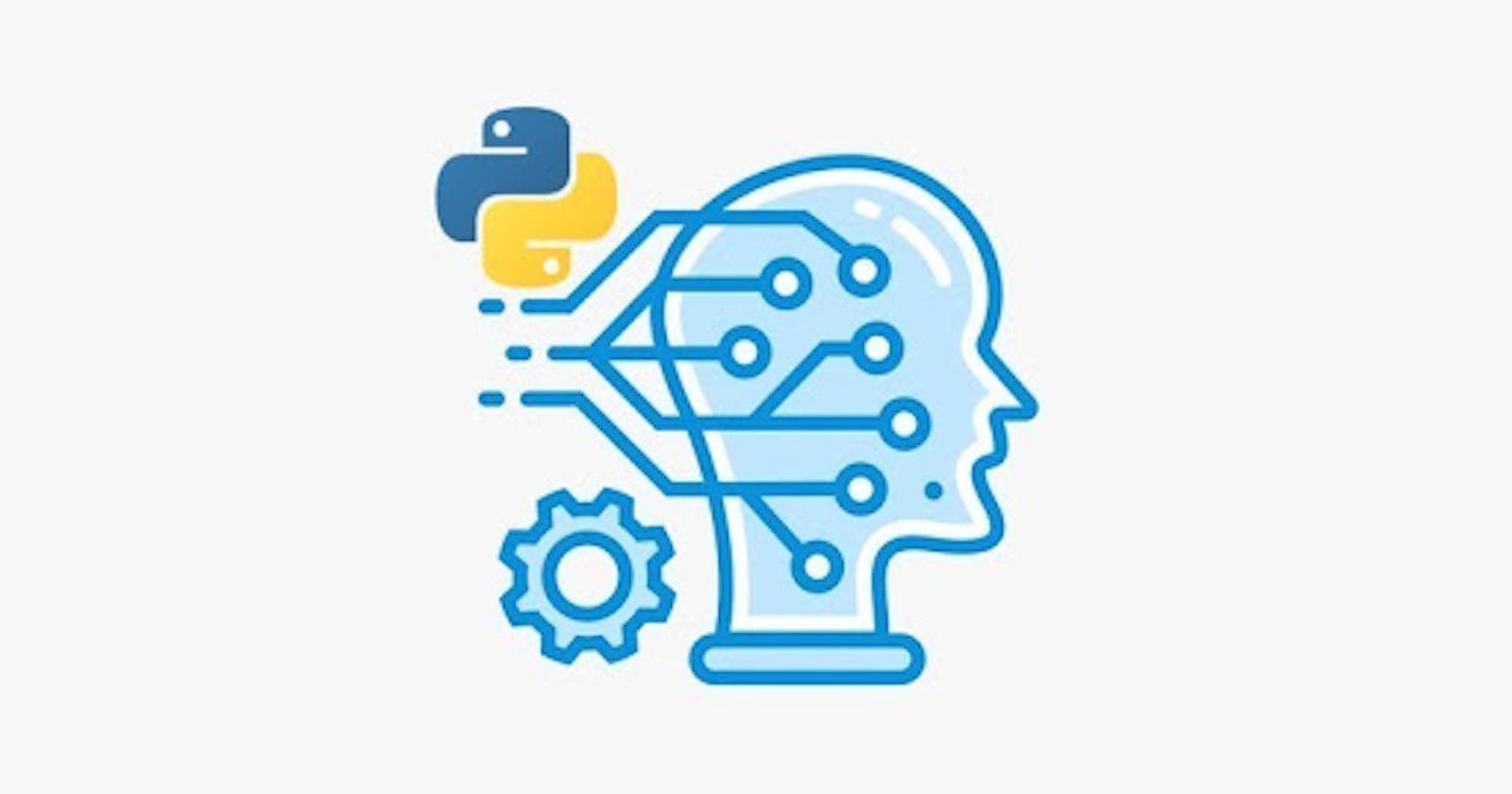Why Python is best suited for Machine Learning
Reasons Why Python is the Go to Language for Machine Learning Engineers
"If you decide to design your own language, there are thousands of sort of amateur language designer pitfalls"- Guido van Rossum(creator of python)
Summary
- Python is a high-level programming language.
- Machine Learning is the ability of a Machine to learn through data while being able to assimilate the data through algorithms.
- Python is the most popular Language used for Machine Learning.
 Above is a picture with the words Python and Machine Learning
Above is a picture with the words Python and Machine Learning
Python is regarded as the best language for Machine Learning but a lot of people especially newbies don't really know why this is so. This article is here to explain why and also to prove beyond doubt that python is the best language for Machine Learning.
As the two central themes around which this article is built, I feel it is only fair we explain Python and Machine Learning before getting to the main points.
Let us Begin
What is Python
According to the official website, Python is an interpreted, object-oriented, high-level programming language with dynamic semantics. Its high-level built-in data structures, combined with dynamic typing and dynamic binding, make it very attractive for Rapid Application Development, as well as for use as a scripting or glue language to connect existing components together.
In simple words, Python is a high level (can be understood by human beings) programming language which was designed to be easy to use, understand and simple to implement and this makes it a favourite of beginners. To learn more about the python click here.
Now let us know...
The meaning of Machine Learning
According to Wikipedia , Machine Learning is the study of computer algorithms that improve automatically through experience and by the use of data.
Personally, I feel that definition sounds like something a university professor would say😅, here is a simpler one by IBM, - Machine learning is a branch of artificial intelligence (AI) and computer science which focuses on the use of data and algorithms to imitate the way that humans learn, gradually improving its accuracy.
In simple words, Machine Learning is the art of making smart machines learn about a particular thing or environment by giving them data pertaining to that thing or environment and using algorithms to help them make sense of that data.
Now we've gotten a background on our subject themes let us go down to the central issue and look at...
Why Python is used for Machine Learning
It's Simple and consistent
The world of Machine Learning is made up of complex algorithms and versatile workflows but python offers concise and readable code and this helps Machine Learning developers focus more on creatively solving problems rather than having to figure out the complexity of a programming language.
Python is said to be a very intuitive and language and this makes it appealing to Machine Learning developers to build complex models with.
Extensive Library Ecosystem
Building Machine Learning models can quickly become complex and tricky. In order to reduce that complexity, open-source libraries have been built to make the creation of Machine Learning models easier.
Software libraries are pre-written codes that are used to solve common problems. To understand software libraries you must first understand that a software developers life is filled with writing of code but sometimes some of the code written is so common that it makes no sense for all software developers to keep on writing them over and over again. Just like it wouldn't make sense for an author to write a book for each individual buyer when they can simply just print the books and distribute them. To learn more about Software Libraries click here
In simple non-esoteric words, Software libraries are pieces of code Platform that are used constantly when developing software that developers decided to just write and compile all of them in a package and distribute then name something ridiculous like pandas🤣.
Python is so popular amongst Machine Learning Engineers because a lot of those software libraries are written in it, libraries like;
- Pandas:For data analysis.
- Keras:For building deep learning models.
- MatplotLib:For data visualization.
- Numpy:For building and manipulating arrays.
- Sklearn:For building Machine Learning Models.
- Tensorflow:For building Neural Networks.
There are lots more libraries, for a somewhat exhaustive list click here
Platform Independence
Platform Independence simply means the ability of a programming language to allow developers to run the same code on different machines like Linux, Windows and macOS. If you think platform independence is not a big issue go learn CSS😅.
Python code can be used to create standalone executable programs for most common operating systems, which means that Python software can be easily distributed and used on those operating systems without a Python interpreter up and running on that system.
Another thing you can often find companies and data scientists who use their own machines with powerful Graphics Processing Units (GPUs) to train their ML models. And the fact that Python is platform-independent makes this training a lot cheaper and easier.
Vibrant and Active Community
In a developer survey by StackOverflow, Python was amongst the 5 most popular languages and in a world where they are 700 or more programming languages that's saying a lot.
In the survey, it is shown that 26% of all python developers use the language for web development so 26% of the Python community is made up of Web developers, but Machine Learning and data analysis come in a close second with 27% combined so the Python Machine Learning community is very large and this means that you can easily get help anywhere you are stuck.
below is a picture showing the StackOverflow developer survey spoken of above

Now we've spoken about the major reason why Python is popularly used for Machine Learning, you might be wondering if they are alternatives and that brings us to.....
Other Languages used for Machine Learning.
The field of AI and Machine Learning is still a growing one and even though Python is the go-to language for Machine Learning and it may still be for years to come they are still some other alternatives and we'll talk about them below:
R
R is generally applied when you need to analyze and manipulate data for statistical purposes. R has packages such as Gmodels, Class, Tm, and RODBC that are commonly used for building machine learning projects. These packages allow developers to implement machine learning algorithms without the extra hassle and let them quickly implement business logic.
R was created by statisticians to meet their needs. This language can give you in-depth statistical analysis whether you’re handling data from an IoT device or analyzing financial models.
Scala
Scala is invaluable when it comes to big data. It offers data scientists an array of tools such as Saddle, Scalalab, and Breeze. Scala has great concurrency support, which helps with processing large amounts of data. Since Scala runs on the JVM, it goes beyond all limits hand in hand with Hadoop, an open-source distributed processing framework that manages data processing and storage for big data applications running in clustered systems. Despite fewer machine learning tools compared to Python and R, Scala is highly maintainable.
Julia
If you need to build a solution for high-performance computing and analysis, you might want to consider Julia. Julia has a similar syntax to Python and was designed to handle numerical computing tasks. Julia provides support for deep learning via the TensorFlow.jl wrapper and the Mocha framework.
However, the language is not supported by many libraries and doesn’t yet have a strong community like Python because it’s relatively new.
Java
Another language worth mentioning is Java. Java is object-oriented, portable, maintainable, and transparent. It’s supported by numerous libraries such as WEKA and Rapidminer.
Java is widespread when it comes to natural language processing, search algorithms, and neural networks. It allows you to quickly build large-scale systems with excellent performance.
But if you want to perform statistical modelling and visualization, then Java is the last language you want to use. Even though there are some Java packages that support statistical modelling and visualization, they aren’t sufficient. Python, on the other hand, has advanced tools that are well supported by the community.
EndNote
In Machine Learning and programming in general it usually does not matter the language you use as Programming Languages are nothing but tools. But it is always a safe bet to use a proven tool when building Would you choose a machete over a Saw when trying to cut wood?

